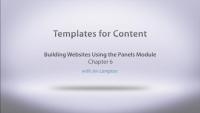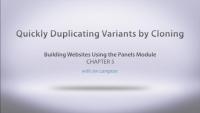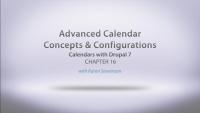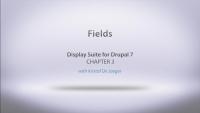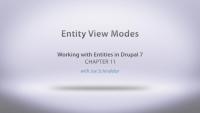This learning series covered just the tip of the theming iceberg. Hopefully you're now feeling motivated to learn even more about theming. In this lesson we will review some of the other topics you will want to explore next including: advanced theming techniques, using a base theme, such as Omega, layout modules. By the end of this lesson you will by able to identify which videos you should (or could) watch next to learn more about theming Drupal.
Drupal site builders have long wanted to rearrange the display of each piece of content. The page manager module provides us with a default node view context we can use to accomplish just this. In this lesson you will learn how to break an article into two columns.
Panelizer configuration involves several layers of configuration. It can be challenging to find all the corners of configuration to export, without needing to still perform some extra manual steps after deployment. With Strongarm module, we can export the related settings that make Panelizer work, avoiding the need for extra manual steps.
In this lesson, we will:
- Enable Strongarm module
- Create new feature
- Export and Deploy Panelizer settings
By the end of this lesson, you should understand how to export all of Panelizer's settings plus the related settings that support its functionality.
Demo site log in:
- Navigate to /user
- Login with admin/admin
Additional resources
Now that you’ve manually created a new variant for your front page, this lesson will teach you a much faster way to duplicate an existing variant. This technique is useful if your variants are very similar to one another.
In this exercise you will demonstrate more advanced Views skills by building a view with a relationship between content and taxonomy and formatting the output using a table.
In this lesson we cover a module that comes with Organic Groups called "Organic Groups Context". We cover why this module exists, how it helps build out your groups page, and the way it lends a helping hand building out views to make your Organic Groups that much more powerful.
Note: You must first be a member of the organic group referenced by the node for filtering to work. Under relationships, we've selected "OG membership: OG membership" from Node. So if you're not a member of the group referenced by the node, you will get zero results.
Additional resources
In this lesson we give a tour of some of the views that Organic Groups and Organic Groups Extra created and are using. We give a brief understanding of how all the references and relationships can make Organic Groups a confusing thing to grasp.
Additional resources
In this video we take a look at several advanced configuration options when working with calendars. We start off by talking about the various pager options available and how that works with AJAX, and then we explain how you can keep track of the current date that someone is viewing the calendar in as they move through the various displays. We wrap up by covering three methods for working with caching to improve your site's performance, as calendars can be intensive, depending on the site. We'll discuss caching with the Entity cache module, using the Date API date caching, and then review using views caching.
Additional resources
This lesson covers all the updates/differences in the latest 2.x version versus other Drupal 7 releases. The new 2.x version of Display Suite is still in active development at the time that this video was published, but we want to make sure you know the changes that are coming when the new version is finally released. This video is very important to view if you are using Display Suite version 2 for the first time and have watched other videos in this series. It covers UI changes/updates as well as feature differences.
Additional resources
In this tutorial, I’ll show you how to create a custom layout to use in Display Suite. We’ll take a look at the instructions in Display Suite’s ds.api.php file to find out how to provide our own custom layout. In this process, we’ll take a shortcut and copy a layout from Display Suite into my custom theme and modify it. In the next tutorial, we’ll look at the drush command ds-build which allows you to quickly scaffold a display suite custom layout in your module or theme.
Additional resources
Display Suite Fields
FreeIn this lesson we cover adding different type of custom fields to your layout using Display Suite. From adding a custom code field, blocks, to dynamic fields, each of these can be moved around your layout and replicated/modified across different display modes.
Additional resources
Probably the most common use case for view modes is teaser nodes. Or, a node being rendered in the teaser view mode. View modes allow entities to be displayed different depending on context, and also allow other modules like Field API that participate in the entity rendering process to adjust their behavior depending on the requested view mode.
In this lesson we’re going to take a look at an ‘authenticated’ view mode that we can use to adjust the display for any authenticated users. Then we’ll update Entity Controller class and make use of this new view mode in our ::view() method.
NOTE: in the video Joe forgot to change the 'member' label to "Member" and then later in the video when we view it in the UI it is corrected. The sample code included with this video has the correct label.
In this chapter Joe covers two really important tools for most sites: cron and search. We start by explaining what cron is, and how core provides us with a basic cron tool. We also walk through how to set up your own custom cron if the core settings don't suit you. Next we look at Drupal's core search and the various ways you can configure that.

